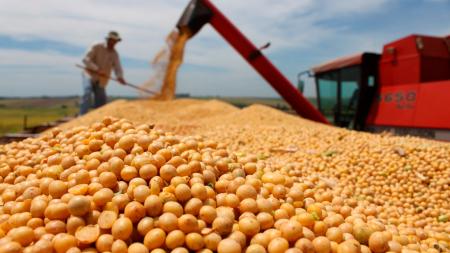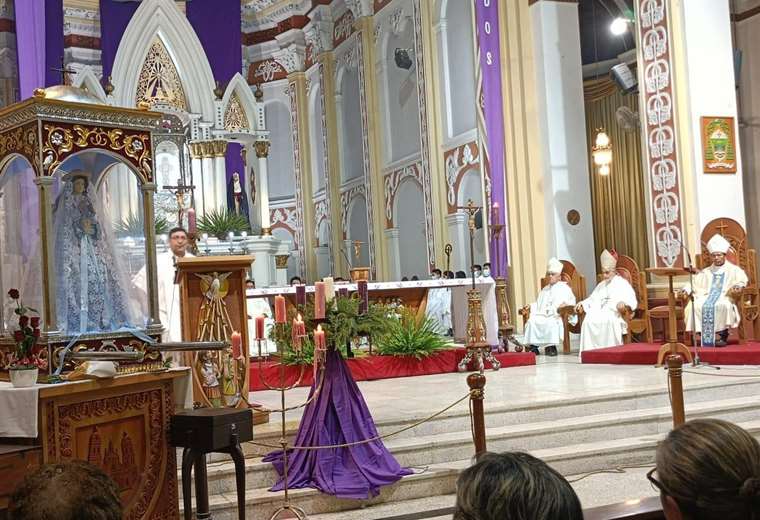The Central Bank (BCRA) closed operations this Monday with a positive balance of US$ 192 million on the first day of validity of the reissue of the Export Increase Program (PIE), which establishes a differential exchange rate of $230 per dollar. for the soybean complex.
As reported on Monday by the monetary entity in a statement, The amount of dollars that grain exporters entered into the Single Free Exchange Market (MULC) reached US$292 million, of which US$192 million remained for the Central Bank.
With the reopening of the Export Increase Program (PIE), which establishes a differential exchange rate for the soybean complex of $230 per dollarthe Government aims to achieve revenues of around US$ 3,000 million until December 31.
With regard specifically to grain sales, The volume of soybeans traded was 124,781 tons until 6:30 p.m., according to official data published on the SioGranos monitorwhich indicates a growth in the commercialization of beans compared to last Friday of 183%.
Regarding the prices paid by the industries, the average went from $68,306 a ton to $85,000, with an increase of 24.4%.
The reopening of the program contemplates an update in the price of the dollar based on the evolution of inflation, taking as a reference the $200 that governed the first version implemented.
This Monday morning, the Secretary of Agriculture, Juan José Bahillo affirmed that as of the reestablishment of the soybean dollar “the price has to have an increase, it has to be close to $80,000 a ton when today it is around $65,000 or $66,000.”
In dialogue with Radio Provincia, the official said that the measure “will allow the Government to collect gross reserve income of around US$ 3,000 million over the course of the month.”
“That is one of the vectors of the program and the other is an improvement for the income of producers who still have soybeans, which we understand are still many, fortunately, and that there is a volume that will allow us to reach these numbers and also supply to the internal market”, added the secretary.
He remarked that “if there is an improvement for the producer, there is an improvement for the entire chain”, and recalled that “the program already in September was very good, the producers had a very good adhesion, which exceeded all expectations”.
This Monday at noon, the Rosario Stock Exchange reported that the estimated price of a ton of soybeans was $80,000 as a result of the start of the PIE.
At the closing of the round, that value became $85,000.
In this way, the value of the oilseed ton for producers jumped 125% compared to the $68,000 that was paid before the reopening of the soybean dollar.
For his part, The Secretary of Industry, José Ignacio de Mendiguren, affirmed that with the reopening of the soybean dollar it is sought that “reserves increase so that the economy reaches the end of the year with US$ 10,000 million freely available to have a back, so that the tomorrow, speculation will not unbalance us”.
Speaking to Futurock, he noted that “nobody wants several exchange rates, we have to normalize and stabilize the economy”, but he affirmed that “it is a solution, a tool for exceptional circumstances that Argentina is experiencing today”.
It is “a product where there is volume, where US$ 3,000 million can be requested, which also has less impact on the domestic market because only 8% is sold internally and the rest is exported, and has 33% withholding.”
“This greater collection that will be achieved by increasing the dollar to $230 will be given in subsidies to chicken, pork, and dairy farms, so that the price increase in soybeans does not impact the prices of the domestic market.” , De Mendiguren assured.
He also commented that part of this increased collection will also go to regional economies and “also to social plans so that it returns to the pocket of Argentines.”
In the recitals of the DNU published today in the Official Gazette, which bears the signature of President Alberto Fernández, they argue that the reopening of the program was ordered because “it is necessary to continue the implementation of policies that tend to strengthen the reserves of the Central Bank , stimulating the generation of genuine income of the National State, product of the export of merchandise with low incidence in the value chains of national supply”.
The previous edition of the PIE left a balance of almost 14 million tons of soybeans that were marketed, and a settlement that totaled US$ 8,125 million, according to official figures.









